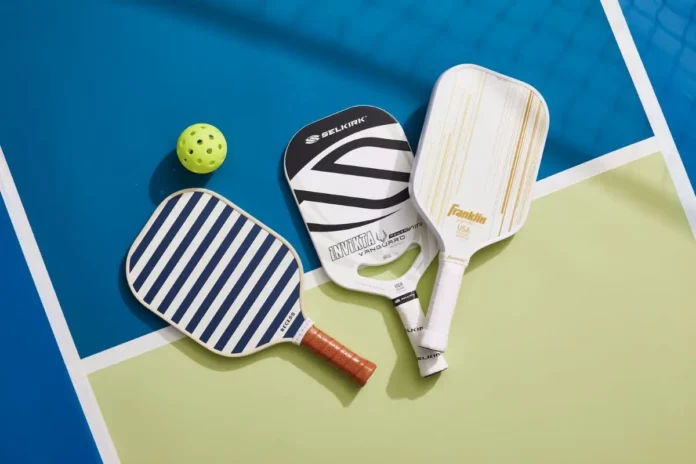Mastering the Pickleball Paddle Selection: Whether someone is a beginner purchasing their first pickleball paddle or a seasoned veteran seeking the ideal paddle to complement a power game with the right amount of spin, the process of choosing a pickleball paddle can be confusing and frustrating.
Before diving into the specifics of paddle details, it’s crucial to emphasize that the ideal paddle for one player may not work for another. Every player has their unique preferences when it comes to the feel and performance of a paddle.
It’s highly recommended to try out paddles before purchasing. Borrow paddles from friends during recreational play or test different models to understand what feels best. By experimenting with various brands and models, players will gain a better sense of their paddle preferences.
Pickleball Paddle Purchase Considerations
When selecting a pickleball paddle, there are many factors to consider beyond just the color or price. The following discusses the key elements that can influence the decision: paddle cores, faces, weight, edge guards, handles, and shapes.
Paddle Cores
The core material of a paddle is one of the most important factors in determining its playability, particularly in terms of power and control. The most common materials include:
- Nomex Core: A synthetic textile developed by DuPont, Nomex offers high-density power due to its small cell structure. It creates a loud “pop” sound on impact and is ideal for players seeking power.
- Polymer Core: Popular for its “softer” feel, the polymer core absorbs impact more, offering better control and making it quieter than other cores.
- Aluminum Core: Known for being lightweight and strong, aluminum cores provide less power compared to others due to their lightness.
- Wood Core: While inexpensive, wood cores are the heaviest and least effective for advanced play. They are more suited to beginners or recreational settings.
Paddle Faces (Surface Materials)
The paddle’s surface material also affects performance. The most common options are:
- Fiberglass: Known for providing more power but less durability than other materials.
- Graphite: Strong and durable, graphite provides good control, though it sacrifices some power.
- Carbon Fiber: Offers exceptional control but with a loss of power.
Weight
The weight of a paddle is a critical consideration for comfort and play style. Lighter paddles are easier to maneuver and offer more control but lack the power of heavier paddles. Conversely, heavier paddles provide more power but can be more difficult to handle, especially during fast exchanges.
A good starting point is a mid-weight paddle. Trying different weights is key to finding what feels best, as comfort is the priority.
Edge Guard
Most paddles have an edge guard, which protects the paddle’s edge from damage. However, this reduces the hitting surface slightly. For a larger hitting area, some players prefer edgeless pickleball paddles.
Grip
The grip size is crucial for comfort and control. Most grips range from 4″ to 4 ½” in circumference. It’s generally better to opt for a smaller grip that can be adjusted with an over-grip if needed. The grip’s texture and shape also influence play, so finding the right feel is essential.
Shape
Pickleball paddles come in various shapes, including:
- Classic Shape: Typically around 8″ x 15 ¾”. The most traditional form of the paddle.
- Oversized Faces: Larger paddle faces allow for a greater hitting surface. These paddles typically feature shorter handles to meet size regulations.
- Elongated Paddles: These pickleball paddles take full advantage of the 17-inch length limit, offering a longer reach but a narrower sweet spot. Elongated paddles are best suited for players seeking more reach, though beginners might struggle with the smaller sweet spot.


